1899
| Millennium: | 2nd millennium |
|---|---|
| Centuries: | |
| Decades: | |
| Years: |
| 1899 in topic |
|---|
| Humanities |
|
Archaeology – Architecture – Art Literature – Music |
| By country |
| Australia – Belgium – Brazil – Canada – Denmark – France – Germany – Mexico – New Zealand – Norway – Philippines – Portugal – Russia – South Africa – Spain – Sweden – United Kingdom – United States – Venezuela |
| Other topics |
| Rail transport – Science – Sports |
| Lists of leaders |
| Sovereign states – State leaders – Territorial governors – Religious leaders |
| Birth and death categories |
| Births – Deaths |
| Establishments and disestablishments categories |
| Establishments – Disestablishments |
| Works category |
| Works |
| Gregorian calendar | 1899 MDCCCXCIX |
| Ab urbe condita | 2652 |
| Armenian calendar | 1348 ԹՎ ՌՅԽԸ |
| Assyrian calendar | 6649 |
| Bahá'í calendar | 55–56 |
| Balinese saka calendar | 1820–1821 |
| Bengali calendar | 1306 |
| Berber calendar | 2849 |
| British Regnal year | 62 Vict. 1 – 63 Vict. 1 |
| Buddhist calendar | 2443 |
| Burmese calendar | 1261 |
| Byzantine calendar | 7407–7408 |
| Chinese calendar | 戊戌年 (Earth Dog) 4595 or 4535 — to — 己亥年 (Earth Pig) 4596 or 4536 |
| Coptic calendar | 1615–1616 |
| Discordian calendar | 3065 |
| Ethiopian calendar | 1891–1892 |
| Hebrew calendar | 5659–5660 |
| Hindu calendars | |
| - Vikram Samvat | 1955–1956 |
| - Shaka Samvat | 1820–1821 |
| - Kali Yuga | 4999–5000 |
| Holocene calendar | 11899 |
| Igbo calendar | 899–900 |
| Iranian calendar | 1277–1278 |
| Islamic calendar | 1316–1317 |
| Japanese calendar | Meiji 32 (明治32年) |
| Javanese calendar | 1828–1829 |
| Julian calendar | Gregorian minus 12 days |
| Korean calendar | 4232 |
| Minguo calendar | 13 before ROC 民前13年 |
| Nanakshahi calendar | 431 |
| Thai solar calendar | 2441–2442 |
| Tibetan calendar | 阳土狗年 (male Earth-Dog) 2025 or 1644 or 872 — to — 阴土猪年 (female Earth-Pig) 2026 or 1645 or 873 |
| Wikimedia Commons has media related to 1899. |
1899 (MDCCCXCIX) was a common year starting on Sunday of the Gregorian calendar and a common year starting on Friday of the Julian calendar, the 1899th year of the Common Era (CE) and Anno Domini (AD) designations, the 899th year of the 2nd millennium, the 99th year of the 19th century, and the 10th and last year of the 1890s decade. As of the start of 1899, the Gregorian calendar was 12 days ahead of the Julian calendar, which remained in localized use until 1923.
Events
January–March
- January 1
- Spanish rule ends in Cuba.
- Queens and Staten Island become administratively part of New York City.
- January 6 – Lord Curzon becomes Viceroy of India.
- January 8 – The Association football club SK Rapid Wien is founded, in Vienna.
- January 10 – The Tau Kappa Epsilon Fraternity is founded, at Illinois Wesleyan University in Bloomington, Illinois.
- January 17 – The United States takes possession of Wake Island in the Pacific Ocean.
- January 19 – The Anglo-Egyptian Sudan is formed (it is disbanded in 1956).
- January 21 – Opel Motors opens for business in Germany.
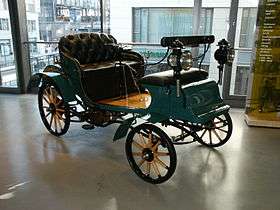
January 21: Opel car.
- January 22 – The leaders of six Australian colonies meet in Melbourne, to discuss the confederation of Australia as a whole.
- January 23
- Emilio Aguinaldo is sworn in, as President of the First Philippine Republic.
- The British Southern Cross Expedition crosses the Antarctic Circle.
- February 2 – The participants in the Australian Premiers' Conference, held in Melbourne, agree that Australia's capital (Canberra) should be located between Sydney and Melbourne.
- February 4 – The Philippine–American War begins as hostilities break out in Manila.
- February 6 – Spanish–American War: A peace treaty between the United States and Spain is ratified by the United States Senate.
- February 12–14 – Great Blizzard of 1899: Freezing temperatures and snow extend well south into North America, including southern Florida; it is the latest in a series of disasters to Florida's citrus industry.
- February 14 – Voting machines are approved by the U.S. Congress, for use in federal elections.
- February 15 – The February Manifesto is issued by the Emperor of Russia, decreeing that a veto by the Diet of Finland may be overruled in legislative matters concerning the interest of all Russia, including autonomous Finland. The manifesto is viewed as unconstitutional and a coup d'état by many Finns, who have come to consider their country a separate constitutional state in its own right, in union with the Russian Empire. Furthermore, the manifesto also fails to elaborate the criteria that a law has to meet in order to be considered to concern Russian imperial interests, and not an internal affair of Finland (affairs over which the Diet's authority is supposed have remained unaltered), leaving it to be decided by the autocratic Emperor. This results in Finnish fears that the Diet of Finland may be overruled arbitrarily.
- February 16 – Knattspyrnufélag Reykjavíkur, the first Association football club in Iceland, is established in the island's capital, Reykjavík.
- February 25 – In an accident at Grove Hill, Harrow, London, England, Edwin Sewell becomes the world's first driver of a petrol-driven vehicle to be killed; his passenger, Maj. James Richer, dies of injuries three days later.[1]
- March 1 – In Afghanistan, Capt. George Roos-Keppel makes a sudden attack on a predatory band of Chamkannis that have been raiding in the Kurram Valley, and captures 100 prisoners with 3,000 head of cattle.
- March 2 – Mount Rainier National Park is established, in the U.S. state of Washington.
- March 4 – Cyclone Mahina strikes Bathurst Bay, Queensland. A 12 meter high wave reaches up to 5 km inland, leaving over 400 dead (the deadliest natural disaster in Australia's history).

March 6: Aspirin.
- March 6 – German chemist Felix Hoffmann patents aspirin, and Bayer registers its name as a trademark.
- March 8 – The Frankfurter Fußball-Club Victoria von 1899 (predecessor of Eintracht Frankfurt) is founded.
- March 20 – At Sing Sing prison in Ossining, New York, Martha M. Place becomes the first woman executed in an electric chair.
- March 24 – George Dewey is made Admiral of the U.S. Navy.
- March 27
- Guglielmo Marconi successfully transmits a radio signal across the English Channel.[2]
- Philippine–American War – Battle of Marilao River: Filipino forces under the personal command of Emilio Aguinaldo, President of the Philippines, fail to prevent troops of the United States Army crossing the river.
- March 30 – The German Society of Chemistry issues an invitation to other national scientific organizations, to appoint delegates to the International Committee on Atomic Weights.
- March 31 – Philippine–American War: Capture of Malolos – Malolos, capital of the First Philippine Republic, is taken by American forces.
April–June
- April 15 – Students at the University of California, Berkeley steal the Stanford Axe from Stanford University, yelling at leaders following a baseball game, thus establishing the Axe as a symbol of the rivalry between the schools.
- April 26 – Jean Sibelius's First Symphony premiers in Helsinki, Finland.
- May 3 – The Ferencvárosi TC Association football club is founded in Budapest.
- May 13 – The Esporte Clube Vitória Association football club is founded in Salvador, Brazil.
- May 14 – The three time world champion Club Nacional de Football is founded in Montevideo, Uruguay.
- May 18 – The First Hague Peace Conference is opened in The Hague by Willem de Beaufort, Minister of Foreign Affairs of the Netherlands.
- May 30 – Female outlaw Pearl Hart robs a stage coach 30 miles (48 km) southeast of Globe, Arizona.
- May 31 – The Harriman Alaska Expedition is launched.
- June 9 – American boxer James J. Jeffries knocks out Cornish-born Bob Fitzsimmons in the 11th round and wins the world heavyweight championship in a bout at Coney Island, New York.[3]
- June 12 – The New Richmond tornado completely destroys the town of New Richmond, Wisconsin, killing 117 and injuring more than 200.
- June 17 – David Hilbert creates the modern concept of geometry, with the publication of his book Grundlagen der Geometrie, released on this date at Göttingen.[4]
- June 19 – Edward Elgar's Enigma Variations premieres in London.
- June 20 – Right-wing nationalist movement Action Française formed in France
- June 22–27 – The highest ever recorded individual cricket score, 628 not out, is made by A. E. J. Collins. This record stood until 2016.
- June 25 – Three Denver newspapers publish a story (later proved to be a fabrication) that the Chinese government under the Guangxu Emperor is going to demolish the Great Wall of China.
- June 27 – The paperclip is patented by Johan Vaaler, a Norwegian inventor.[5]
- June 30 – Mile-a-Minute Murphy earns his nickname after he becomes the first man to ride a bicycle for one-mile (1.6 km) in under a minute, on Long Island.
July–September
- July 1 – The International Council of Nurses is founded in London, at a meeting of the Matron's Council of Great Britain and Ireland.[6]
- July 14 – The first Republic of Acre is declared in South America.
- July 17
- America's first juvenile court is established in Chicago.
- NEC Corporation is organized as the first Japanese joint venture with foreign capital.
- Battle of Togbao: The French Bretonnet–Braun mission is destroyed in Chad, by the warlord Rabih az-Zubayr.
- The Anglo-Japanese Treaty of Commerce and Navigation takes effect, ending extraterritoriality and the unequal status of Japan in foreign commerce.[7]
- July 21 – The Newsboys' strike takes place, when the Newsies of New York go on strike (until August 2).
- July 27 – Gold is discovered in Nome, Alaska, leading to the Nome Gold Rush.[8]
- July 29 – The first international Peace Conference ends, with the signing of the First Hague Convention.
- July 30 – The Harriman Alaska Expedition ends successfully.
- July 31 – Duke of York Island, outside Antarctica, is discovered by explorer Carsten Borchgrevink and the British Southern Cross Expedition.[9]
- August 3 – The John Marshall Law School is founded in Chicago.
- August 10 – Marshall "Major" Taylor wins the world 1-mile (1.6 km) professional cycling championship in Montreal, securing his place as the first African American world champion in any sport.[10]
- August 17 – The San Ciriaco hurricane makes landfall in North Carolina's Outer Banks, completely destroying the town of Diamond City.
- August 28 – At least 512 are killed when a debris hill from the Sumitomo Besshi copper mine at Niihama, Shikoku, Japan, collapses after heavy rain; 122 houses, a smelting factory, hospital and many other facilities are destroyed.
- August 31 – The Olympique de Marseille association football club is founded in France.[11]
- September 6 – The White Star Line's transatlantic ocean liner RMS Oceanic sails on her maiden voyage. At 17,272 gross tons and 704 ft (215 m), she is the largest ship afloat, following scrapping of the SS Great Eastern a decade earlier.[12]
- September 13 – Mackinder, Ollier and Brocherel make the first ascent of Batian (5,199 m or 17,057 ft), the highest peak of Mount Kenya.
- September 13 – Henry Bliss is the first person in the United States to be killed in an automobile accident.
- September 18 – Scott Joplin's Maple Leaf Rag is registered for copyright, as ragtime music enjoys mainstream popularity in the United States.
- September 19 – Alfred Dreyfus is pardoned in France.
October–December
- October 9–14 – The Hanover Congress of the Social Democratic Party of Germany is held in Hanover.
- October 11 – The Second Boer War: In South Africa, a war between the United Kingdom and the Boers of the Transvaal and Orange Free State erupts.
- October 13 – Second Boer War: The siege of Mafeking begins.
- October 14 – Second Boer War: Kimberley comes under siege by the Boers.
- October 20 – Second Boer War – Battle of Talana Hill: In the first major clash of the conflict, near Dundee, Natal, the British Army drives the Boers from a hilltop position, but with heavy casualties, including their commanding general Sir Penn Symons.
- October 30 – Second Boer War: The Siege of Ladysmith begins.
- October 30 – The Augusta High School Building is completed in Augusta, Kentucky; Augusta Methodist College shuts down.
- November 4 – The Alpha Sigma Tau Sorority is founded in Ypsilanti, Michigan.
- November 8 – The New York Zoological Society opens the Bronx Zoological Park to the public, in New York City.
- November 15 – The American Line's SS St. Paul becomes the first ocean liner to report her imminent arrival by wireless telegraphy, when Marconi's station at The Needles contacts her 66 nautical miles (122 km) off the coast of England.
- November 24 – Mahdist War – Battle of Umm Diwaykarat: A decisive British and Egyptian victory ends the war in the Sudan.
- November 29 – The FC Barcelona Association football club is founded.
- December 2
- Philippine–American War – Battle of Tirad Pass ("The Filipino Thermopylae"): General Gregorio del Pilar and his troops are able to guard the retreat of Philippine President Emilio Aguinaldo, before being wiped out.
- During the new moon, a near-grand conjunction of the classical planets and several binocular Solar System bodies occur. The Sun, Moon, Mercury, Mars and Saturn are all within 15° of each other, with Venus 5° ahead of this conjunction and Jupiter 15° behind. Accompanying the classical planets in this grand conjunction are Uranus (technically visible unaided in pollution-free skies), Ceres and Pallas.
- December 10
- Four-month-old Sobhuza II begins his 82-year reign as King of Swaziland, on the death of his father, Ngwane V; his grandmother Labotsibeni Mdluli serves as queen regent.
- The college fraternity Delta Sigma Phi is founded at the City College of New York, by Charles A. Tonsor Jr. and Meyer Boskey.
- December 11 – Second Boer War – Battle of Magersfontein: Boers defeat British forces trying to relieve the Siege of Kimberley.
- December 15 – Glasgow School of Art opens its new building, the most notable work of Scottish architect Charles Rennie Mackintosh.[13]
- December 16
- The Association football club A.C. Milan is founded in Italy.
- Augusta High School in Augusta, Kentucky burns down, due to a heating plant failure.
- December 26 – Pinnacle Rock, a Balancing rock in Cumberland Gap, falls down.[14]
Date unknown
- The significance of Chinese oracle bones is discovered.
- The North Carolina General Assembly incorporates the town of Manteo, which was originally laid out as the Dare County seat in 1870.
- Riro, last of the Kings of Easter Island, on a visit to Valparaíso, Chile, dies either from alcohol poisoning, or an assassination plot by the Chilean government.[15]
- Oxo beef stock cubes are introduced, by Liebig's Extract of Meat Company.
- Alfred R. Tucker becomes Bishop of Uganda.[16]
- The German company Miele is founded.
Births
January
- January 1 – Jack Beresford, British Olympic rower (d. 1977)
- January 3 – Karl Diebitsch, German fashion designer (1985)
- January 6
- Alphonse Castex, French rugby union player (d. 1969)
- Heinrich Nordhoff, German automotive engineer (d. 1968)
- Elsie Steele, British supercentenarian (d. 2010)
- January 7 – Francis Poulenc, French composer (d. 1963)
- January 8 – S. W. R. D. Bandaranaike, 4th Prime Minister of Sri Lanka (d. 1959)
- January 11 – Eva Le Gallienne, English actress (d. 1991)
- January 12 – Paul Hermann Müller, Swiss chemist, recipient of the Nobel Prize in Physiology or Medicine (d. 1965)
- January 14
- Fritz Bayerlein, German general (d. 1970)
- Carlos Romulo, Filipino diplomat (d. 1985)
- January 15 – Goodman Ace, American actor, comedian and writer (d. 1982)
- January 17
- Al Capone, American gangster (d. 1947)
- Nevil Shute, English-born novelist (d. 1960)
- January 20 – Kenjiro Takayanagi, Japanese television development pioneer (d. 1990)
- January 21 – Dr. John Bodkin Adams, British physician acquitted of murder (d. 1983)
- January 23 – Alfred Denning, Baron Denning, English lawyer, judge and Master of the Rolls (d. 1999)
- January 25 – Paul-Henri Spaak, 31st Prime Minister of Belgium and international statesman (d. 1972)
- January 27 – Béla Guttmann, Hungarian-born Association football coach (d. 1981)
- January 30 – Max Theiler, South African virologist, recipient of the Nobel Prize in Physiology or Medicine (d. 1972)
February
- February 2 – Herbie Faye, American actor (d. 1980)
- February 3
- Café Filho, 18th President of Brazil (d. 1970)
- Doris Speed, British actress (d. 1994)
- Lao She, Chinese author (d. 1966)
- Mildred Trotter, American forensic anthropologist (d. 1991)
- February 6 – Ramon Novarro, Mexican actor (d. 1968)
- February 7 – Earl Whitehill, American baseball player (d. 1954)
- February 10 – Cevdet Sunay, 5th President of Turkey (d. 1982)
- February 15
- Georges Auric, French composer (d. 1983)
- Lillian Disney, American artist (d. 1997)
- Gale Sondergaard, American actress (d. 1985)
- February 17
- Jibanananda Das, Indian poet, writer, novelist and essayist in Bengali (d. 1954)
- Leo Najo, American baseball player (d. 1978)
- February 19 – Ehrenfried Pfeiffer, German scientist (d. 1961)
- February 22
- Joseph Le Brix, French aviator, naval officer (d. 1931)
- George O'Hara, American actor (d. 1966)
- Ian Clunies Ross, Australian scientist (d. 1959)
- Dechko Uzunov, Bulgarian painter (d. 1986)
- February 23 – Erich Kästner, German writer (d. 1974)
- February 24 – Mikhail Gromov, Soviet aviator (d. 1985)
- February 26
- Alec Campbell, Australian WWI soldier, last Australian Gallipoli veteran (d. 2002)
- Max Petitpierre, member of the Swiss Federal Council (d. 1994)
- February 27 – Charles Best, Canadian medical scientist (d. 1978)
March
- March 4 – Harry R. Wellman, University of California president (d. 1997)
- March 8
- Eric Linklater, American author (d. 1974)
- Elmer Keith, American rancher, author, and firearms enthusiast (d. 1984)
- March 11 – King Frederick IX of Denmark (d. 1972)
- March 13 – John Hasbrouck Van Vleck, American physicist, Nobel Prize laureate (d. 1980)
- March 18 – Jean Goldkette, French-born musician (d. 1962)
- March 21 – Panagiotis Pipinelis, Prime Minister of Greece (d. 1970)
- March 24 – Dorothy C. Stratton, American director of the SPARS during World War II (d. 2006)
- March 27 – Gloria Swanson, American actress (d. 1983)
- March 28
- August Anheuser Busch, Jr., American founder of the Anheuser-Busch Brewery Company (d. 1989)
- Harold B. Lee, 11th president of The Church of Jesus Christ of Latter-day Saints (d. 1973)
- March 29 – Lavrentiy Beria, Soviet official (d. 1953)
April
- April 1 – Gustavs Celmiņš, Latvian fascist leader (d. 1968)
- April 3 – Maria Redaelli-Granoli, Italian supercentenarian, oldest person in Europe (d. 2013)
- April 4 – Hillel Oppenheimer, German-born Israeli botanist (d. 1971)
- April 5 – Elsie Thompson, American supercentenarian (d. 2013)
- April 7 – Robert Casadesus, French pianist (d. 1972)
- April 9 – Hans Jeschonnek, German general (d. 1943)
- April 16 – Osman Achmatowicz, Polish chemist (d. 1988)
- April 19 – George O'Brien, American actor (d. 1985)
- April 20 – Alan Arnett McLeod, Canadian soldier (d. 1918)
- April 21 – Percy Lavon Julian, American scientist (d. 1975)
- April 22 – Vladimir Nabokov, Russian-born American writer (d. 1977)
- April 23 – Bertil Ohlin, Swedish economist, Nobel Prize laureate (d. 1979)
- April 24 – Oscar Zariski, Russian mathematician (d. 1986)
- April 27 – Walter Lantz, American animator, creator of Woody Woodpecker (d. 1994)
- April 29
- Duke Ellington, Afrrican-American jazz musician, bandleader (d. 1974)
- Mary Petty, American illustrator (d. 1976)
May
- May 3 – Aline MacMahon, American actress (d. 1991)
- May 6 – Billy Cotton, British entertainer, bandleader (d. 1969)
- May 8 – Friedrich Hayek, Austrian economist, Nobel Prize laureate (d. 1992)
- May 10
- Fred Astaire, American singer, dancer, and actor (d. 1987)
- Dimitri Tiomkin, Ukrainian-born composer (d. 1979)
- May 12 – Indra Devi, Baltic-born yogi, and actress (d. 2002)
- May 15 – Jean-Étienne Valluy, French general (d. 1970)
- May 17 – Carmen de Icaza, Spanish writer (d. 1979)
- May 20 – John Marshall Harlan II, Associate Justice of the Supreme Court of the United States (d. 1971)
- May 23 – Jeralean Talley, American supercentenarian (d. 2015)
- May 24
- Suzanne Lenglen, French tennis player (d. 1938)
- Kazi Nazrul Islam, Bangladeshi national poet (d. 1976)
- May 30 – Irving Thalberg, American film producer (d. 1936)
June
- June 1 – Edward Charles Titchmarsh, British mathematician (d. 1963)
- June 2 – Lotte Reiniger, German-born silhouette animator (d. 1981)
- June 3 – Georg von Békésy, Hungarian biophysicist, recipient of the Nobel Prize in Physiology or Medicine (d. 1972)
- June 4 – Arthur Barker, American criminal, son of Ma Barker (d. 1939)
- June 11 – Yasunari Kawabata, Japanese writer, Nobel Prize laureate (d. 1972)
- June 12 – Fritz Albert Lipmann, American biochemist, recipient of the Nobel Prize in Physiology or Medicine (d. 1986)
- June 13 – Carlos Chávez, Mexican composer (d. 1978)
- June 16 – Helen Traubel, American soprano (d. 1972)
- June 18 – John Warburton, British actor (d. 1981)
- June 24 – Bruce Marshall, Scottish writer (d. 1987)
- June 25 – Arthur Tracy, American singer (d. 1997)
- June 26
- Odus Mitchell, American football player and coach (d. 1989)
- Grand Duchess Maria Nikolaevna of Russia (d. 1918)
- June 27 – Juan Trippe, American airline pioneer, entrepreneur (d. 1981)
- June 29 – Edward Twining, British diplomat, formerly Governor of North Borneo[1] and Governor of Tanganyika (d. 1967)
- June 30
- Madge Bellamy, American actress (d. 1990)
- Harry Shields, American jazz clarinettist (d. 1971)
July
- July 1
- Thomas A. Dorsey, American musician (d. 1993)
- Charles Laughton, English-American stage, film actor (d. 1962)
- Konstantinos Tsatsos, President of Greece (d. 1987)
- July 4 – Austin Warren, American literary critic, author, and professor of English (d. 1986)
- July 5 – Marcel Achard, French playwright, scriptwriter (d. 1974)
- July 6 – Susannah Mushatt Jones, American supercentenarian (d. 2016)
- July 7
- George Cukor, American film director (d. 1983)
- Jesse Wallace, American naval officer, 29th Governor of American Samoa (d. 1961)
- July 10 – John Gilbert, American actor (d. 1936)
- July 11
- Frank R. Walker, American admiral (d. 1976)
- E. B. White, American writer (d. 1985)
- July 15 – Seán Lemass, Taoiseach of Ireland (d. 1971)
- July 16 – Božidar Jakac, Slovene Expressionist, Realist and Symbolist painter, printmaker, art teacher, photographer and filmmaker (d. 1989)
- July 17 – James Cagney, American actor (d. 1986)
- July 18 – Floyd Stahl, American collegiate athletic coach (d. 1996)
- July 20 – Paul Christoph Mangelsdorf, American botanist and agronomist (d. 1989)
- July 21
- Hart Crane, American poet (d. 1932)
- Ernest Hemingway, American author, journalist (d. 1961)
- July 22 – King Sobhuza II of Swaziland (d. 1982)
- July 23 – Gustav Heinemann, former German president (d. 1976)
- July 24 – Chief Dan George, Canadian actor, writer and tribal chief of the Tsleil-Waututh First Nation (d. 1981)
- July 29
- Walter Beall, American baseball player (d. 1959)
- Alice Terry, American film actress (d. 1987)
August
- August 1 – Kamala Nehru, Spouses of Prime Minister of India (d. 1936)
- August 4 – Ezra Taft Benson, 13th president of The Church of Jesus Christ of Latter-day Saints (d. 1994)
- August 9
- Paul Kelly, American stage, film actor (d. 1956)
- P. L. Travers, Australian-born British actress, journalist and author (d. 1996)
- August 13 – Alfred Hitchcock, British-born American film director (d. 1980)
- August 16 – Glenn Strange, American actor (d. 1973)
- August 19 – Colleen Moore, American actress (d. 1988)
- August 24
- Jorge Luis Borges, Argentine writer (d. 1986)
- Albert Claude, Belgian biologist, recipient of the Nobel Prize in Physiology or Medicine (d. 1983)
- August 27
- C. S. Forester, English novelist (d. 1966)
- Byron Foulger, American actor (d. 1970)
- August 28
- Charles Boyer, French actor (d. 1978)
- Vernon Huber, American rear admiral; 36th Governor of American Samoa (d. 1967)
- August 29
- Lyman Lemnitzer, American general (d. 1988)
- Rufino Tamayo, Mexican painter (d. 1991)
- August 30 – Ray Arcel, American boxing trainer (d. 1994)
- August 31 – Boots Adams, American business magnate, president of Phillips Petroleum Company (d. 1975)
September
- September 1
- Andrei Platonovich Klimentov, Russian-born Soviet writer (d. 1951)
- Takuma Nishimura, Japanese general (d. 1951)
- September 3 – Frank Macfarlane Burnet, Australian biologist, recipient of the Nobel Prize in Physiology or Medicine (d. 1985)
- September 9
- Brassaï, French photographer (d. 1984)
- Waite Hoyt, American baseball player (d. 1984)
- September 13 – Corneliu Zelea Codreanu, Romanian fascist politician, leader of the Iron Guard (d. 1938)
- September 17 – Harold Bennett, British actor (d. 1981)
- September 18 – Ida Kamińska, Polish-Jewish actress, playwright, and translator (d. 1980)
- September 21 – Frederick Coutts, 8th General of The Salvation Army (d. 1986)
- September 23 – Tom C. Clark, Associate Justice of the Supreme Court of the United States (d. 1977)
- September 28 – Boris Yefimov, Russian political cartoonist (d. 2008)
October
- October 1 – Ernest Haycox, American writer (d. 1950)
- October 3 – Gertrude Berg, American actress (d. 1966)
- October 4 – Franz Jonas, President of Austria (d. 1974)
- October 5 – George, Duke of Mecklenburg, head of the House of Mecklenburg-Strelitz (d. 1963)
- October 9 – Bruce Catton, American Civil War historian, Pulitzer Prize winner (1954) (d. 1978)
- October 19 – Miguel Ángel Asturias, Guatemalan writer, Nobel Prize laureate (d. 1974)
- October 20 – Evelyn Brent, American actress (d. 1975)
- October 24 – Burr Shafer, American cartoonist (d. 1965)
- October 29 – Akim Tamiroff, Armenian actor (d. 1972)
- October 30 – Katarina Marinič, Slovenian supercentenarian (d. 2010)
November
- November 5 – Forrest Lewis, American actor (d. 1977)
- November 6 – Feng Zhanhai, Chinese military leader, government official (d. 1963)
- November 7 – Yitzhak Lamdan, Russian-born Israeli poet, columnist (d. 1954)
- November 11 – Pat O'Brien, American actor (d. 1983)
- November 13
- Vera Caspary, American screenwriter, novelist, playwright (d. 1987)
- Iskander Mirza, 1st President of Pakistan (d. 1969)
- November 15 – Avdy Andresson, Estonian Minister of War in Exile (d. 1990)
- November 17 – Douglas Shearer, American film sound engineer (d. 1971)
- November 18 – Eugene Ormandy, Hungarian conductor (d. 1985)
- November 19 – Abu al-Qasim al-Khoei, Shia Ayatollah (d. 1992)
- November 21 – Jobyna Ralston, American actress (d. 1967)
- November 22 – Hoagy Carmichael, American composer, pianist, singer, actor, and bandleader (d. 1981)
- November 23 – Manuel dos Reis Machado, Brazilian martial arts master (d. 1974)
- November 24 – Soraya Tarzi, Afghan feminist, queen (d. 1968)
- November 26
- Mona Bruns, American stage, film, radio, and television actress (d. 2000)
- Richard Hauptmann, German murderer of Charles Lindbergh, Jr. (d. 1936)
- Maurice Rose, American general (d. 1945)
- November 29 – Emma Morano, Italian supercentenarian, oldest Italian ever, last surviving person born in the 1800s (d. 2017)
December
- December 1 – Gaetano Lucchese, American gangster, boss of the Lucchese crime family (d. 1967)
- December 2
- John Barbirolli, English conductor (d. 1970)
- Ray Morehart, American baseball player (d. 1989)
- December 3 – Hayato Ikeda, Prime Minister of Japan (d. 1965)
- December 4 – Sam Newfield, American film director (d. 1964)
- December 8 – John Qualen, Canadian-American actor (d. 1987)
- December 9 – Jean de Brunhoff, French writer (d. 1937)
- December 14 – DeFord Bailey, American country musician (d. 1982)
- December 15 – Harold Abrahams, British athlete (d. 1978)
- December 16
- Noël Coward, English actor, playwright, and composer (d. 1973)
- Aleksander Zawadzki, former President of Poland (d. 1964)
- December 18 – Peter Wessel Zapffe, Norwegian author and philosopher (d. 1990)
- December 19 – Martin Luther King Sr., American Baptist pastor, missionary, and early figure in the civil rights movement, father of Martin Luther King Jr. (d. 1984)
- December 20
- Finn Ronne, Norwegian-American explorer (d. 1980)
- John Sparkman, American politician (d. 1985)
- December 25
- Humphrey Bogart, American actor (d. 1957)
- Frank Ferguson, American actor (d. 1978)
- December 28 – Eugeniusz Bodo, Polish actor (d. 1943)
- December 29 – Nie Rongzhen, Chinese Communist military leader (d. 1992)
- December 31 – Friedrich Panse, German psychiatrist (d. 1973)
Date unknown
- Otto Klemperer, German physicist (d. 1987)
- Nureddine Rifai, 25th Prime Minister of Lebanon (d. 1980)
Deaths
January–June
- January 23 – Romualdo Pacheco, Governor of California (b. 1831)
- January 29 – Alfred Sisley, French Impressionist landscape painter (b. 1839)
- January 31 – Princess Marie Louise of Bourbon-Parma, princess consort of Bulgaria (b. 1870)
- February 6
- Leo von Caprivi, Chancellor of Germany (b. 1831)
- Alfred, Hereditary Prince of Saxe-Coburg and Gotha (b. 1874)
- February 16 – Félix Faure, President of France (b. 1841)
- February 23 – Gaëtan de Rochebouët, Prime Minister of France (b. 1813)
- February 25 – Paul Reuter, German-born news agency founder (b. 1816)
- March 3 – William P. Sprague, American politician from Ohio (b. 1827)
- March 6 – Princess Kaʻiulani, last monarch of Hawaii (b. 1875)
- March 12 – Sir Julius Vogel, Premier of New Zealand (b. 1835)
- March 20 – Martha Place, American murderer, first woman executed in the electric chair (b. 1849)
- March 24 – Marie Goegg-Pouchoulin, Swiss national, international women's rights activist, pacifist (b. 1826)
- April 1 – Charles C. Carpenter, American admiral (b. 1834)
- April 5 – T. E. Ellis, Welsh politician (b. 1859)
- April 7 – Pieter Rijke, Dutch physicist (b. 1812)
- April 11 – Lascăr Catargiu, 4-time Prime Minister of Romania (b. 1823)
- April 16 – Emilio Jacinto, Filipino poet, revolutionary (b. 1875)
- April 22 – Johann Köler, Estonian painter (b. 1826)
- May 24 – William Brett, 1st Viscount Esher, British law lord (b. 1817)
- May 25 – Emilio Castelar y Ripoll, President of the First Spanish Republic (b. 1832)
- June 3 – Johann Strauss, Jr., Austrian composer (b. 1825)
- June 4 – Eugenio Beltrami, Italian mathematician (b. 1835)
- June 5 – Antonio Luna, Filipino general (Assassinated) (b. 1866)
- June 7 – Augustin Daly, American theatrical impresario, playwright (b. 1838)
- June 10 – Ernest Chausson, French composer (b. 1855)
July–December
- July 16 – Margaretta Riley, British botanist (b. 1804)
- July 18 – Horatio Alger, Jr., American writer (b. 1832)
- July 21 – Robert G. Ingersoll, American politician (b. 1833)
- July 27 – Tassilo von Heydebrand und der Lasa, German chess-master (b. 1818)
- August 4 – Karl, Freiherr von Prel, German philosopher (b. 1839)
- August 9 – Grand Duke George Alexandrovich of Russia, Russian Grand Duke, younger brother of Nicholas II of Russia (b. 1871)
- August 16 – Robert Bunsen, German chemist (b. 1811)
- September 2 – Ernest Renshaw, British tennis player (b. 1861)
- September 12 – Cornelius Vanderbilt II, American railway magnate (b. 1843)
- September 17 – Charles Alfred Pillsbury, American industrialist (b. 1842)
- September 28 – Giovanni Segantini, Italian painter (b. 1858)
- October 2 – Emma Hardinge Britten, British writer (b. 1823)
- Percy Pilcher, British aviation pioneer, glider pilot (b. 1866)
- October 14 – Anna Waterston, American diarist (b. 1812)
- October 22 – Ella Hoag Brockway Avann, American educator (b. 1853)
- October 23 – Sir Penn Symons, British general (died of wounds) (b. 1843)
- October 30 – William Henry Webb, American industrialist, philanthropist (b. 1816)
- November 16
- Vincas Kudirka, Lithuanian doctor, poet, and national hero (b. 1858)
- Julius Hermann Moritz Busch, German publicist (b. 1821)
- November 21 – Garret Hobart, 24th Vice President of the United States (b. 1844)
- November 23 – Thomas Henry Ismay, British owner of the White Star Line (b. 1837)
- November 24 – Abdallahi ibn Muhammad, Sudanese political, religious leader (killed in battle) (b. 1846)
- November 28 – Virginia Oldoini, Countess of Castiglione (b. 1837)
- December 2 – Gregorio del Pilar, Filipino general (killed in battle) (b. 1875)
- December 10 – King Ngwane V of Swaziland (b. 1876)
- December 19 – Henry Ware Lawton, American general (b. 1843)
- December 22
- Dwight L. Moody, American evangelist (b. 1837)
- Hugh Grosvenor, 1st Duke of Westminster, British landowner and politician (b. 1825)
- December 27 – Erebus Black, English occultist (b. 1851)
Unknown date
- Frances Laughton Mace, American poet (b. 1836)
References
- ↑ "Motoring Firsts". National Motor Museum Trust. Archived from the original on August 21, 2010. Retrieved 2010-08-26.
- ↑ Penguin Pocket On This Day. Penguin Reference Library. 2006. ISBN 0-14-102715-0.
- ↑ Carruth, Gordon, ed. (1962). The Encyclopedia of American Facts and Dates (3rd ed.). Thomas Y. Crowell. pp. 384–387.
- ↑ Volkert, Klaus, ed. (2015). David Hilbert: Grundlagen der Geometrie. Springer. p. ix; Grattan-Guinness, Ivor (2005). Landmark Writings in Western Mathematics 1640-1940 Elsevier. p. 713.
- ↑ Inventors: Paperclip.
- ↑ Lewenson, Sandra B. (2013). Taking Charge: Nursing, Suffrage, and Feminism in America, 1873-1920. Routledge. p. 95.
- ↑ Henning, Joseph M. (2000). Outposts of Civilization: Race, Religion, and the Formative Years of American-Japanese Relations. New York University Press. p. 134.
- ↑ Berton, Pierre (1972). Klondike: The Last Great Gold Rush, 1896-1899. Anchor Canada.
- ↑ C. E. Borchgrevink, First on the Antarctic Continent: Being an Account of the British Antarctic Expedition, 1898-1900 (London: George Newnes, Ltd., 1901)
- ↑ "Professional Information". The Major Taylor Society. Retrieved 2012-01-23.
- ↑ Auclair, Philippe (2015-01-06). "Only in Marseille: where ultras rule and temptation is never far away | Philippe Auclair". The Guardian. ISSN 0261-3077. Retrieved 2017-11-06.
- ↑ "R.M.S. Oceanic (II)". Jeff Newman. Archived from the original on September 19, 2009. Retrieved 2010-01-18.
- ↑ "Congratulations to the Glasgow School of Art as they celebrate 100th anniversary of the Mackintosh Building". Museums Galleries Scotland. 15 December 2009. Retrieved 2010-07-07.
- ↑ "Big Rock Fell". Green Bay, Wisconsin: Green Bay Semi-Weekly Gazette. 27 December 1899. p. 1. Retrieved 15 July 2017 – via newspapers.com.
- ↑ Fischer, Steven R., Island at the End of the World, p. 153
- ↑ "Eighteen Years in Uganda and East Africa". World Digital Library. 1908. Retrieved 2013-09-24.
This article is issued from
Wikipedia.
The text is licensed under Creative Commons - Attribution - Sharealike.
Additional terms may apply for the media files.
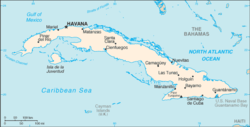
.jpg)




.jpg)










%2C_Biochemist_(2551001689).jpg)














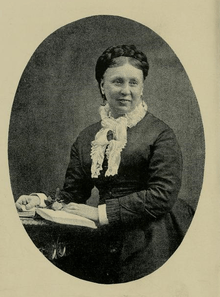

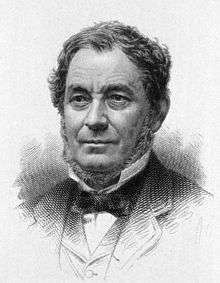
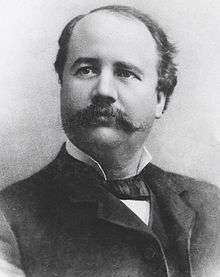
.jpg)